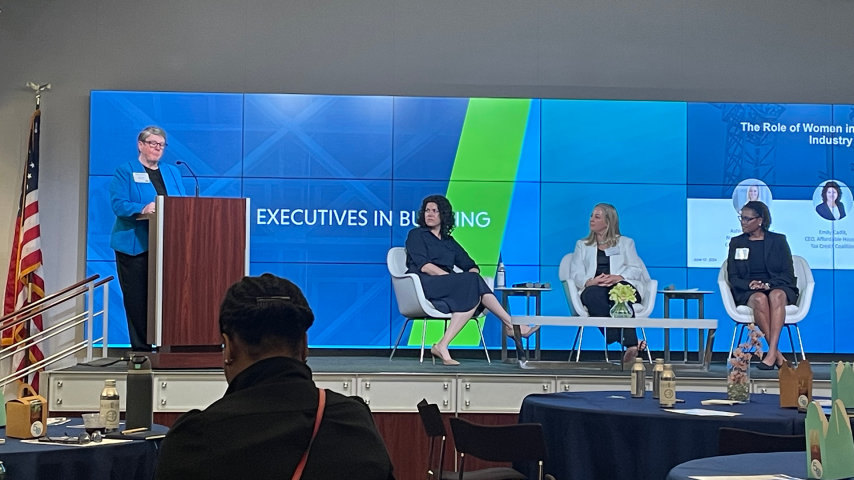
When it comes to barriers to women in construction, they generally include stereotyping and social barriers, lack of education and training, and conditions in the workplace.
This and other diversity and workforce trends were covered during a recent day-long Women Executives in Building Symposium in Washington.
Tracy Thomas, Managing Director for Construction, Facility & Security Management with the U.S. Department of State Bureau of Overseas Buildings Operations (OBO), said aggressive recruiting, support from leadership, and a positive work environment keep women around in the workplace.
Thomas mentioned two key initiatives at OBO, including pointing to the benefits of collaborative partnerships in construction projects and the mutual objectives and shared values.
So how does one get past feeling like a spectacle on the construction site?
“The bias is tall, but I’m tall,” Thomas said. “Having a personality that stands out, learning how to express your own competence and confidence, and finding camaraderie and an ally in the workplace is important.”
Is the Built Environment Actually Changing for Women?
Part of our responsibility as women is to put our own biases aside, as this can hinder our own growth, said a panel of experts, including Vicki Worden, President & CEO, Green Building Initiative; Indra Gutierrez, President, Gutier; Laura Dwyer, Business Development Leader, DuPont Performance Building Solutions; and Jennifer Dewees, President, Maryland Center for Construction Education and Innovation.
And while diversity has changed in the industry in the past five to 10 years, a shortage remains with only 14 percent of women in the construction industry.
There is a massive deficit in opportunity vs. number of actual women working in the industry.
What helps is that many minority students are studying construction management – they grew up with their parents being in the industry and are looking to follow in their footsteps and build a career – and there’s generally more diversity in construction in general.
Dewees brought up imposter syndrome, mentioning that “women in general suffer from this, but we may also be being judged by criteria where we don’t fit.”
“Knowledge is power, and confidence is built over time,” Gutierrez said. “[You need to] find a supporter who wants to see you succeed and figure out who your allies are.”
More WEB Highlights
The construction landscape is expected to change. Many expect greater diversity and inclusion.
Other information that surfaced from the symposium:
- Gen Z is being called toolbelt generation. They want skills-based education. Unless there is a tangible job at the end of the education, they are not interested in those degrees. This generation also is less convinced that you need to go to college to have a career.
- Storytelling is an effective way to convince people and influence stakeholders. Show data and tell the story. Be consistent with messaging.
- Every generation learns differently. We need to teach each generation differently.
- Women make up 51 percent of the population but only about 11 percent of the building industry workforce. We have progress to make.




